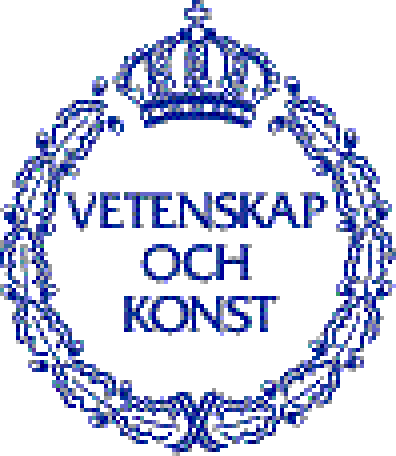| |
Julie Wallace, Martin Russel & Catherine Brown
|
The STAR system: A children´s speech training aid based on automatic speech recognition
|
| |
Jonathan Dalby, Diane Kewley-Port & Roy Sillings
|
Language-specific pronunciation training using the HearSay system
|
| |
Jean-Pierre Messager, Hervé Gourmelon, Guy Mercier & Jacques Siroux
|
Research in speech processing for Breton language training
|
| |
A Álvarez, R Martinez, P Gómez & J L Dominguez
|
A signal processing technique for speech visualization
|
| |
William Byrne, Sanjeev Khudanpur, Eva Knodt & Jared Bernstein
|
Is automatic speech recognition ready for non-native speech? A data collection effort and initial experiments in modeling conversational Hispanic English
|
| |
Philippe Langlais, Anne-Marie Öster, Rolf Carlson & Björn Granström
|
Automatic detection of mispronunciation in non-native Swedish speech
|
| |
Evelyn Abberton & Adrian Fourcin
|
Interactive acquisition of prosodic skills
|
| |
Mariko Kondo
|
The use of prosody for acquisition of Japanese mora-timing by English speakers
|
| |
Anna Sundström
|
Automatic prosody modification as a means for foreign language pronunciation training
|
| |
Anne-Marie Öster
|
Results of spoken L2 teaching with contrastive visual and auditory feedback
|
| |
J van Doorn, J Shakeshaft, A Winkworth, L Hand, S Joshi
|
Models of Australian English vowels for commercial visual feedback systems
|
| |
Maxine Eskenazi, Scott Hansma, Monique Semp & Randy Warner
|
By ear and by eye - adaptive tutoring for foreign language pronunciation training
|
| |
Rodolfo Delmonte
|
Prosodic modeling for automatic language tutors
|
| |
Leonardo Neumeyer, Horacio Franco, Victor Abrash, Luc Julia, Orith Ronen, Harry Bratt, Jehan Bing & Vassilis Digalakis
|
WebGrader: A multilingual pronunciation practice tool
|
| |
Farzad Ehsani, Kathleen Egan, Jim Meador & Steve Stokowski
|
Design and evaluation of a computer aided language learning system for Japanese
|
| |
Stefan Auberg, Nelson Correa, Martin Rothenberg & Mark Shanahan
|
Vowel and intonation training in an English pronunciation tutor
|
| |
Goh Kawai & Keikichi Hirose
|
A call system using speech recognition to train the pronunciation of Japanese tokushuhaku
|
| |
Maxine Eskenazi
|
Duration detection and correction in the Fluency system
|
| |
Horacio Franco, Leonardo Neumeyer & Harry Bratt
|
Modeling intra word pauses in pronunciation scoring
|
| |
Bob Sevenster, Guus de Krom & Gerrit Bloothooft
|
Evaluation and training of second-language learners´ pronunciation using phoneme-based HMMs
|
| |
Catia Cucchiarini, Helmer Strik & Lou Boves
|
Automatic pronunciation grading for Dutch
|
| |
Silke Witt & Steve Young
|
Performance measures for phone-level pronunciation teaching in CALL
|
| |
Stefan Auberg, Nelson Correa, Victoria Locktionova, Richard Molitor & Martin Rothenberg
|
The accent coach: An English pronunciation training system for Japanese speakers
|
| |
John S Pruitt, Hideki Kawahara, Reiko Akahane-Yamada & Rieko Kubo
|
Methods of enhancing speech stimuli for perceptual training: Exaggerated articulation, context truncation, and "STRAIGHT" resynthesis
|
| |
Reiko Akahane-Yamada, Takahiro Adachi, Hideki Kawahara, John S Pruitt & Erik McDermott
|
Toward the optimization of computer-based second-language production training
|
| |
Matthias Jilka & Gregor Möhler
|
Identifying intonational foreign accent by means of resynthesis: implications for foreign language teaching
|
| |
Valerie Hazan & A Simpson
|
The effect of cue-enhancement on consonant perception by non-native listeners
|
| |
Kazuo Nakayama
|
Enhancing speech perception of Japanese learners of English. Utilizing time-scale modification of speech and related techniques
|
| |
S Ciocea, M Dufranne, J Schoentgen & R Beeckmans
|
A multi-modal software interface for teaching phonetic transcription
|
| |
Hĺkan Larsson
|
Lingus - a general purpose computer aided langage learning system which could serve as a platform for the implementation of speech analysis tools
|
| |
Asoke Kumar Datta
|
Stress: An augmented articulator effort
|
| |
Paulina Dalva Artimonte Rocca
|
The efficacy of computer-driven visual feedback in the teaching of intonation to Brazilian learners of English
|
| |
Satoshi Imaizumi, Koichi Mori, Shigeru Kiritani, Toshisada Deguch, Hideaki Seki & Kazuo Nakayama
|
Plasticity in neural and mental representations of non-native phonemes
|
| |
DP Wissing & JL van der Walt
|
The learning of English aspirated stops by Arab speakers
|
| |
NM Brooke & S Scott
|
An audio-visual speech synthesiser
|
| |
Jan Nouza & Jana Mádlíková
|
Evaluation tests on visual feedback in speech and language learning
|
| |
Robert McAllister
|
The concept of "foreign accent" in the production and perception of a second language
|
| |
Gustaf Söderlund & Jan Nordstrand
|
Tactile aids - Training equipment and methods for the varying needs in different ages
|
| |
Ingrid Jonsson
|
Multi-sensory stimulation of voice, speech and sounds from surroundings
|
| |
Ron Cole, Tim Carmell, Pam Connors, Mike Macon, Alice Tarachow, Jacques de Villiers, Joohan Wouters, Dominic Massaro, Michael Cohen, Jie Yang, Uwe Meier, Alex Waibel, Pat Stone, George Fortier, Alice Davis & Chris Soland
|
Intelligent animated agents for interactive language training
|
| |
Pierre Badin, Gérard Bailly, Christian Benoît & Louis-Jean Boë
|
Towards the use of a Virtual Talking Head and of Speech Mapping tools for pronunciation training
|
| |
Dominic W Massaro & Michael M Cohen
|
Speech training for hearing-impaired perceivers using a synthetic animated agent |









